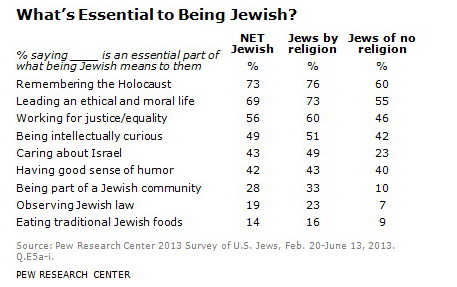Welcome to the third in a series of guest bloggers from my friends and colleagues — all experts in their respective fields. As I wrote last week, these three words — mission, marketing and media — can begin to sound like empty buzzwords unless they are clearly defined and then made actionable for congregations. The content of what they mean is easy. The key is in understanding the context. Rounding out the series, I’m delighted that my friend and colleague Rabbi Jason Miller, President of Access Computer Technology and all-around rabbinic entrepreneur, is this week’s guest blogger. He provides real-world examples of what happens when the bricks and mortar of a congregation meet the bytes and clicks of the digital age, and why social media channels for engaging people are not optional, but integral to congregational work.
“The Social Networking Synagogue of the 21st Century”
Rabbi Jason Miller – Access Computer Technology
 Ask a typical Jewish man or woman if they belong to a synagogue and you’re likely to hear, “Yes, but we only attend on the High Holidays.” Nothing new there. We all know the twice-a-year Jews who only show up in the pews on Rosh Hashanah and Yom Kippur, just as we all know Christians who only appear in church on Christmas and Easter. However, something has changed as of late.
Ask a typical Jewish man or woman if they belong to a synagogue and you’re likely to hear, “Yes, but we only attend on the High Holidays.” Nothing new there. We all know the twice-a-year Jews who only show up in the pews on Rosh Hashanah and Yom Kippur, just as we all know Christians who only appear in church on Christmas and Easter. However, something has changed as of late.
That same individual who once described their synagogue attendance in such sporadic terms might now explain that she is an active member of the congregation. Has she all of a sudden begun attending the bricks and mortar synagogue building any more than she did in the past? No. So what has changed that her answer is so vastly different? She now finds herself engaging with her congregational community in Cyberspace. She is a fan of the congregation’s Facebook page and while she was able to ignore those monthly event flyers that arrived in her mailbox on various colors of copy paper, she now sees each program the congregation offers in her Facebook feed (which she spends an hour a day on average reading!). As she’s following the lives of her friends and family, she’s also tracking the weekly happenings at the synagogue. She can see which friends are attending classes, she is learning from the rabbi who posts some thoughts on the weekly Torah portion, and she closely scrutinizes the photos that were uploaded from the last Sisterhood function (which she didn’t attend in real time, but she now feels as if she was there).
That same individual who felt so out of touch with his congregation because he only engaged the services of the rabbi a few times in the month leading up to his daughter’s bat mitzvah is now subscribed to the congregation’s weekly Constant Contact newsletter. He knows which congregants passed away, whose children became engaged, and who just became grandparents for the first time. He can now keep up with what his children are learning in the religious school because he follows the education director’s tweets during the school hours (wow, he thinks, this is way more interesting than my Hebrew School experience!). He learned from uploaded photos on Instagram that there is a monthly study session just for men at the local pub led by the rabbi and he already added the next month’s session to his calendar.




